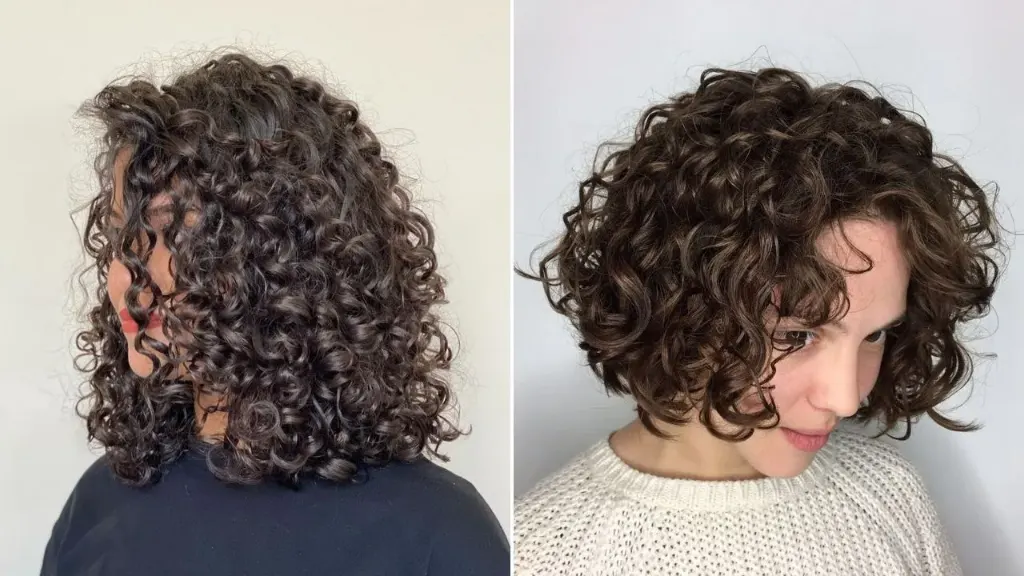Whether you’re wearing the same cut for years or changing your look every few months, your hair defines your particular style. Many people want curls because they provide a soft, voluptuous look that radiates charm. However, not everyone has natural waves or curls, so perm treatments become especially magical. Anyone can get curly or wavy hair via hair perming, which, with appropriate care for permed hair, will last months. We will walk you through the hair perming procedure, discuss contemporary hair perming techniques, and offer aftercare advice to maintain your curls looking fresh and healthy in this book.
What is a Hair Perming?
What, then, is a perm precisely? Simply said, this is a chemical treatment meant to give your hair months-long curls or waves. Though the results are not precisely permanent, usually lasting three to six months, the word “perm” is short for permanent wave.
Perms alter the structure of your hair. Keratin, a kind of protein, makes up most of the hair; perm chemicals break down and repair the links in this protein to produce fresh curls. Ammonium thioglycolate is the most often used chemical in perms, but for more fragile hair, a milder, acid-balanced perm may be utilized.
Modern Hair Perming Techniques
Improvements in hair perming have produced a range of techniques catered to different hair types and intended outcomes. Three contemporary perming procedures that are rather popular nowadays are:
Cold Wave Perm (Alkaline Perm): Using ammonium thioglycolate, this quick, no-heat technique is called cold wave perm (alkaline perm). Its speed and capacity to produce long-lasting, well-defined curls make it rather popular.
Acid-Balanced Perm: Often requiring heat to establish the curls, this milder approach is ideal for damaged or fragile hair. There are also self-heating recipes that should heat be a problem.
Exothermic Perm: Considered one of the easiest self-heating, self-timing perms available, the exothermic perm kit provides bouncy curls and fast results.
Whether your goal is gentle wavy perms or tight curly perms, these methods make perming more approachable and flexible for many hair textures.
Different Types of Perms According to Your Hair
There are so many various kinds of perms on the market that it is simple to locate one that fits your style and desired hair results. The most often used perming techniques are shown here:
Body Perm: Perfect for adding volume to fine or flat hair, a body permit leaves smooth waves instead of tight curls. If you like to give your straight hair some extra movement, this is ideal.
Spot Perm: If you just want curls in particular areas of your hair, perhaps at the ends or around the middle, Spot Perm is ideal. It gives you a more natural appearance and lets you select where the curls or waves show up.
Root Perm: Seeking to provide lift and volume right at the roots? For you, this is the root perm. Those with shorter hair especially find this style to be really effective.
Spiral Perm: Long-haired perm individuals will find the spiral perm to provide distinct, tight curls. Those seeking a big, curly change often choose this.
Men also are following the trend! Whether for a full head of curls or subdued waves, perm hair for guys is becoming more and more popular for giving otherwise flat hair texture and volume.
The Hair Perming Process: Step-by-Step Guide
Knowing the several kinds of perms, let’s dissect the hair perming technique to help you understand what to expect from the salon:
Preparation: The first step in preparation is washing your hair to eliminate any product buildup, oil, or dirt. Clean hair lets the perm solution get into more of a target.
Wrapping: Depending on the sort of curl you want, your stylist will separate your hair and wrap it around rods or rollers.
Perm Solution Application: Your wrapped hair is treated with a chemical solution, usually ammonium thioglycolate or a related substance. This solution dissolves the inherent connections in the hair.
Neutralization: Applying a neutralizer comes after the solution has done its work. This locks in the new curly or wavy form by helping the bonds of your hair rebuild.
Final Rinse: Once the neutralizer sets, your hair will be rinsed, styled, and dried to show your new look!
Your hair length and the perm style you selected will determine how long the process takes—two to four hours.
How Long Does a Perm Last?
How long does a perm last? This is among the most often requested questions. Usually speaking, a perm lasts three to six months. Your perm’s lifetime will rely on several elements, including your scalp condition, the perm technique applied, and how well you treat your permed hair.
Long-haired people may find their perms last longer since the weight of the hair helps preserve the curl structure.
Aftercare Tips for Permed Hair
Preserving perm calls for changes to your regular care for permed hair. Here are essential guidelines for maintaining long-lasting curls in long perm hair:
Moisturize Regularly: Use hydrating shampoos and conditioners since perfumes can dry out your hair. Treatments of deep conditioning will help to keep your curls frizz-free and nourished.
Avoid Heat Styling: Steer clear of heat styling since too much of it will ruin your perm and relax the curls. Whether blow-drying your hair, sticking to air drying or using a diffuser.
Protect Your Hair While Sleeping: Use a silk pillowcase or wrap your hair in a silk hat to minimize friction as you sleep. This will help to keep curl definition and stop frizz.
Avoid Washing Too Often: Steer clear of washing too often since it may cause your curls to loosen and rob your hair of natural oils. Try to restrict washing to two to three times a week, and to retain moisture, use a sulfate-free shampoo.
Common Mistakes to Avoid After Getting a Perm
Here are some things to avoid if you want your perm in perfect shape:
Washing Too Soon: Steer clear of washing your hair at least 48 hours following a perm. This lets the curls set slowly.
Applying strong products: Products using alcohol or other drying agents should be avoided since they may ruin your perm and induce frizz.
Exposing Your Hair to Chlorine: Avoid swimming pools or use a swim hat to guard your hair since chlorine can cause curls to lose their structure and turn dry.
Best Products to Use for Permed Hair
Maintaining your perm calls to utilize the correct treatments. These are some basic ideas:
Curl-Enhancing Creams and Mousses: These curl-enhancing creams and mousses shape and maintain your curls without weighing them down.
Leave-In Conditioners: Particularly on days when you don’t wash your hair, a leave-in conditioner will offer extra hydration.
Deep Conditioning Treatments: Once a week, use a deep conditioner to maintain healthy and hydrated hair.
At Last,
From contemporary perming methods to aftercare advice, today’s hair perming process makes it simpler than ever to get and keep gorgeous, bouncy curls. The appropriate maintenance and supplies will keep your curls looking fresh for months, whether you choose a body perm, spiral perm, or spot perm. Though they are a commitment, remember that with the correct information, you will be able to enjoy amazing curls that accentuate your style.


